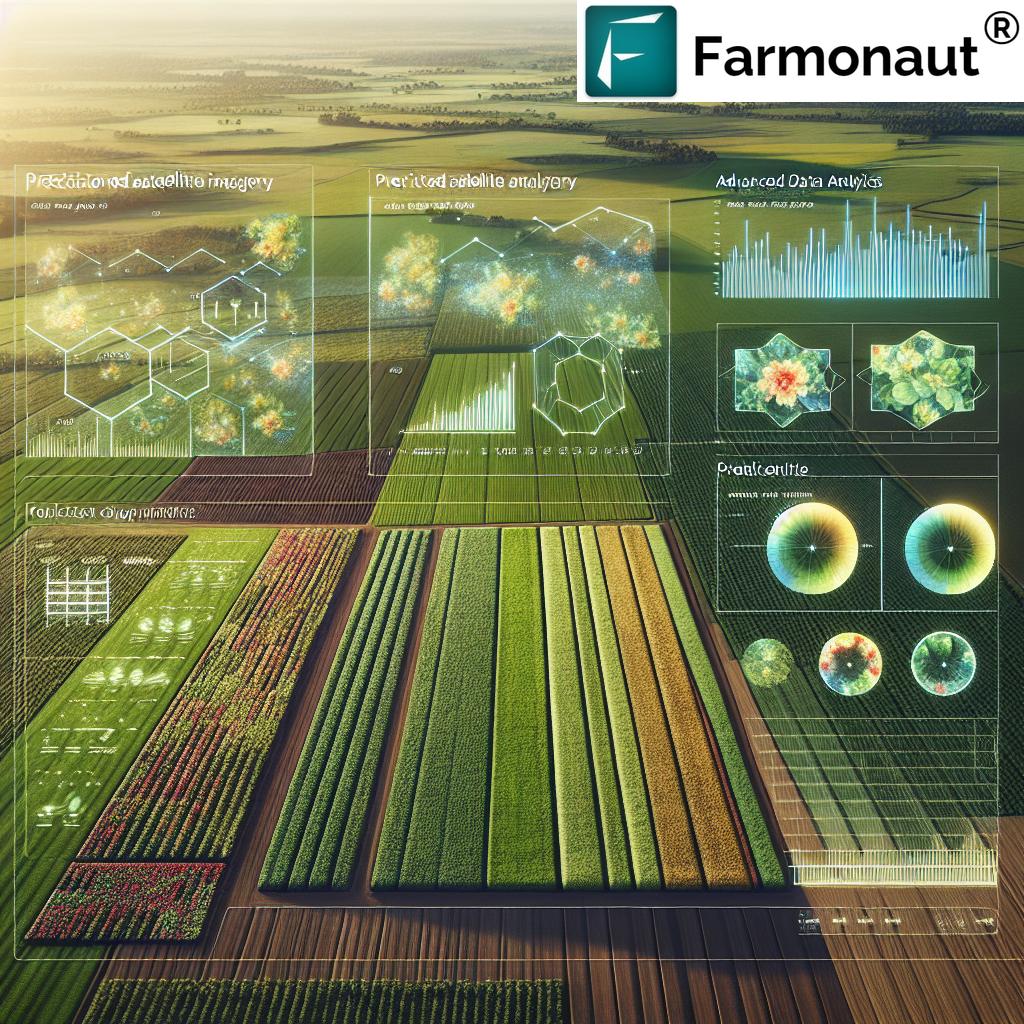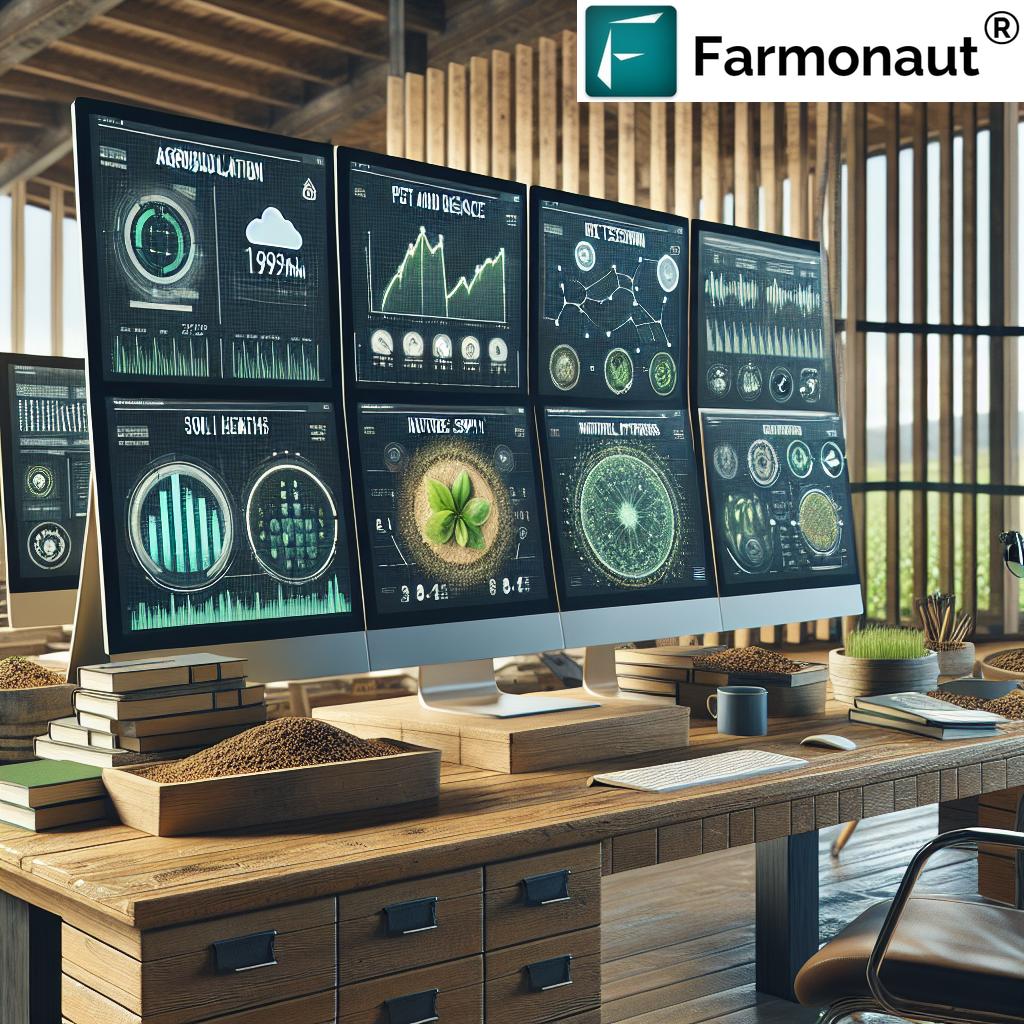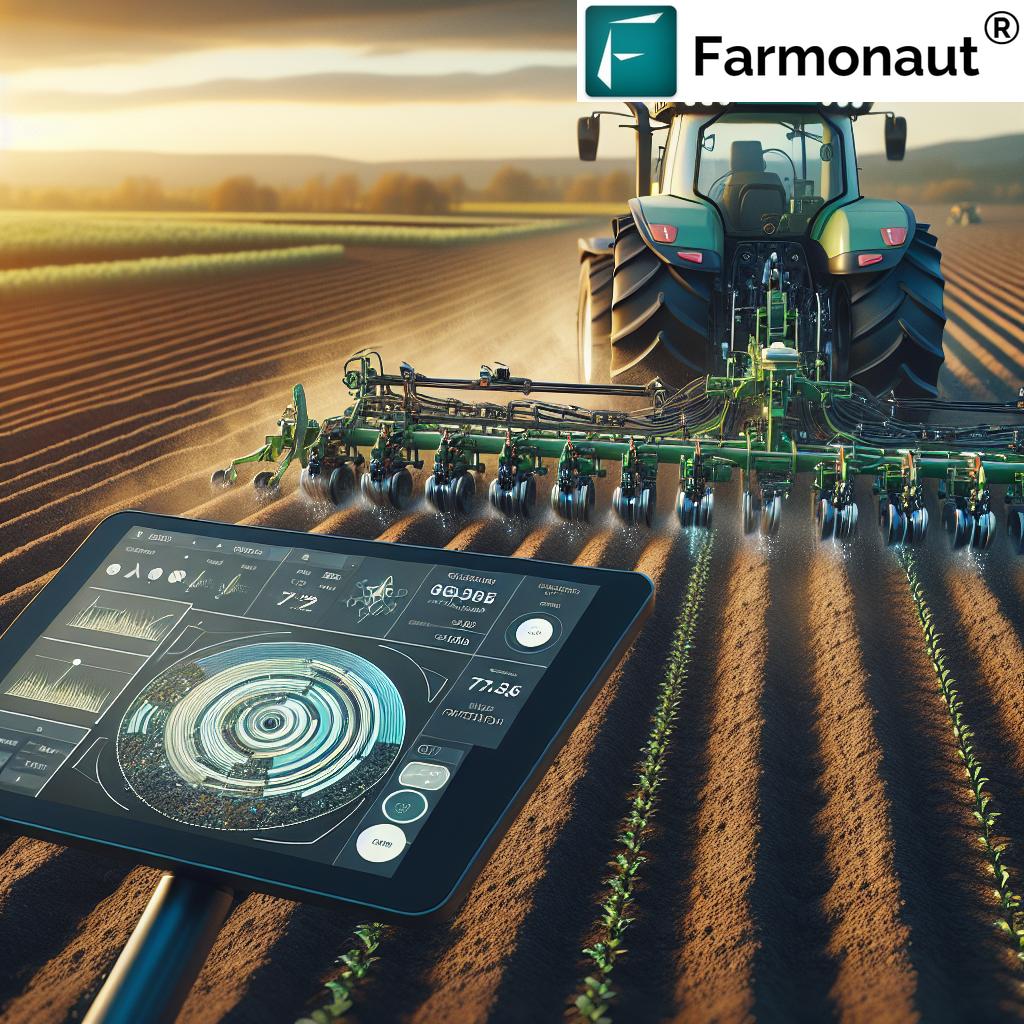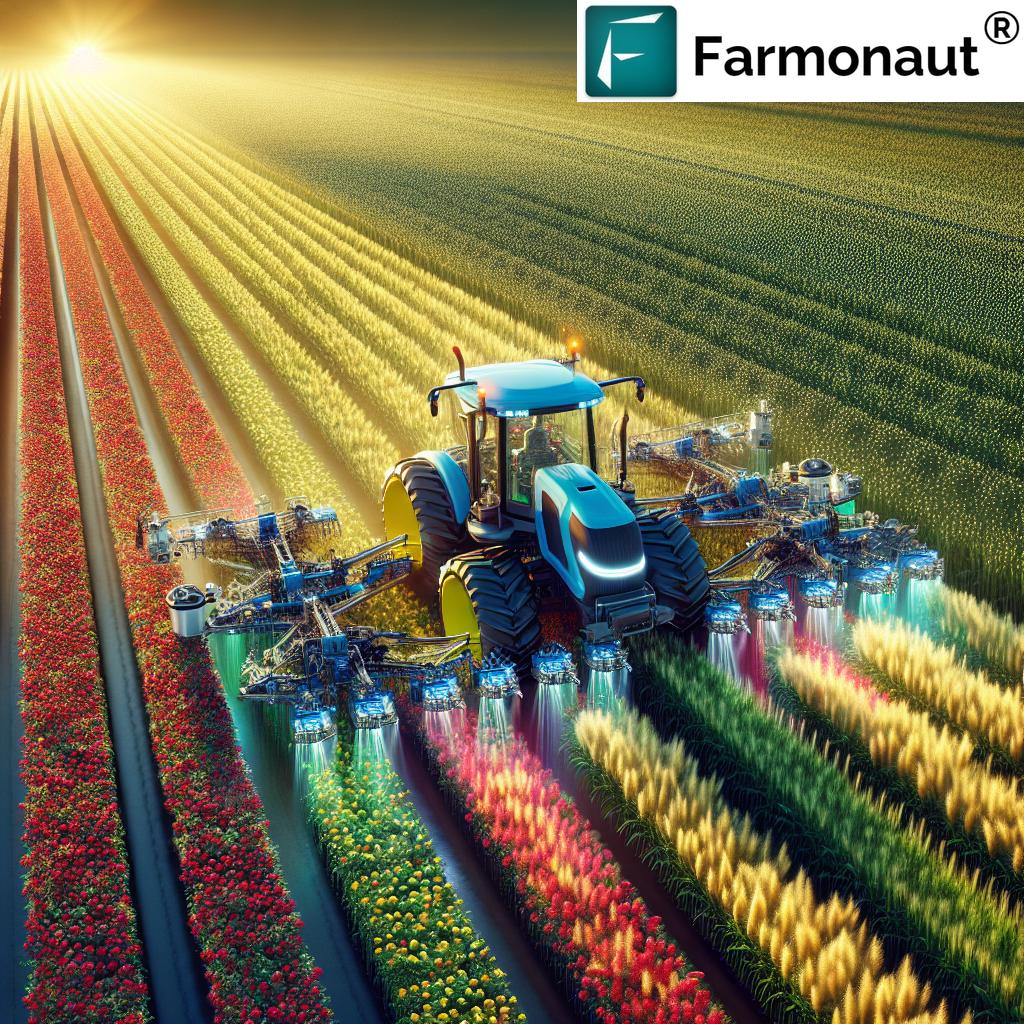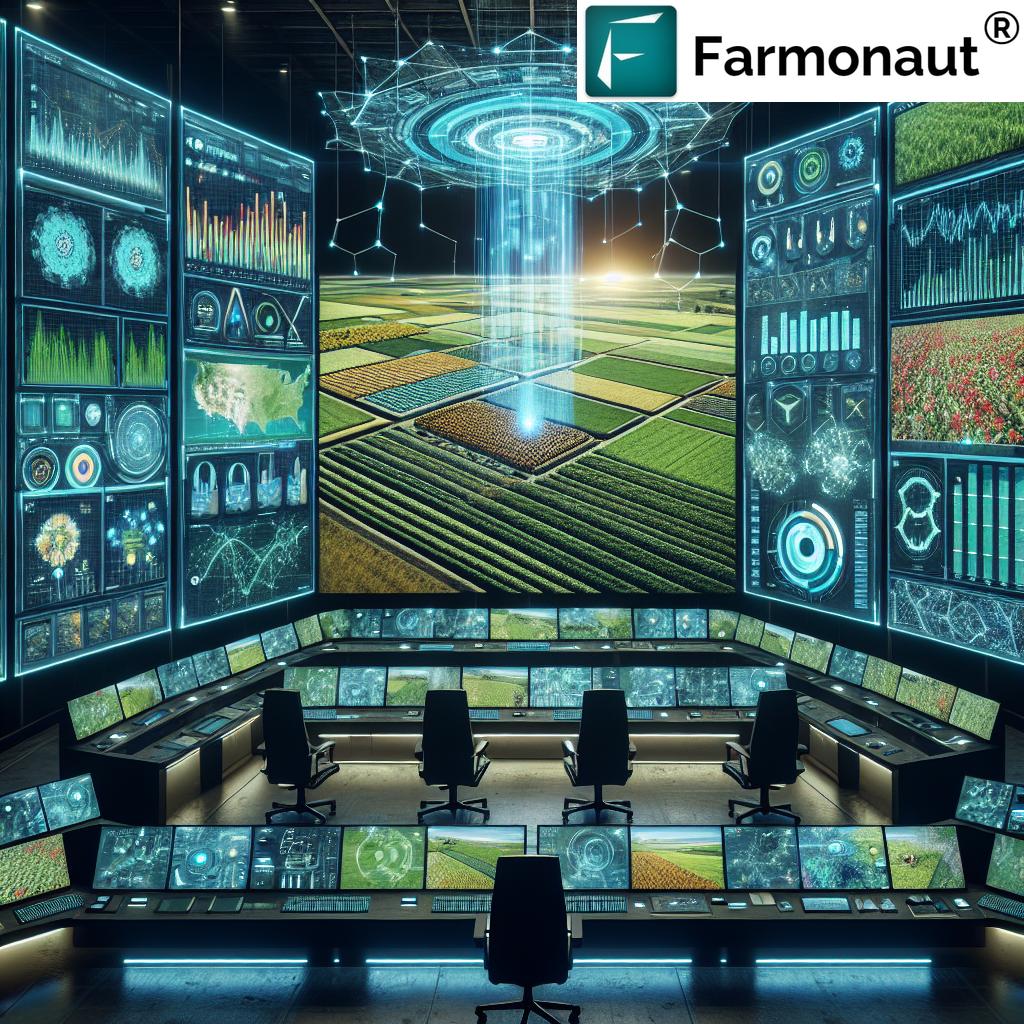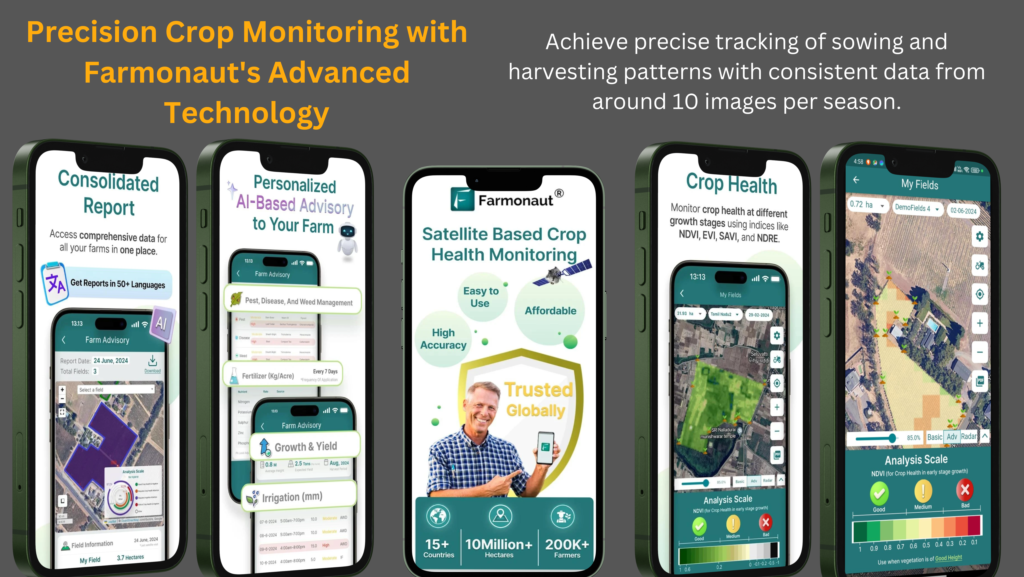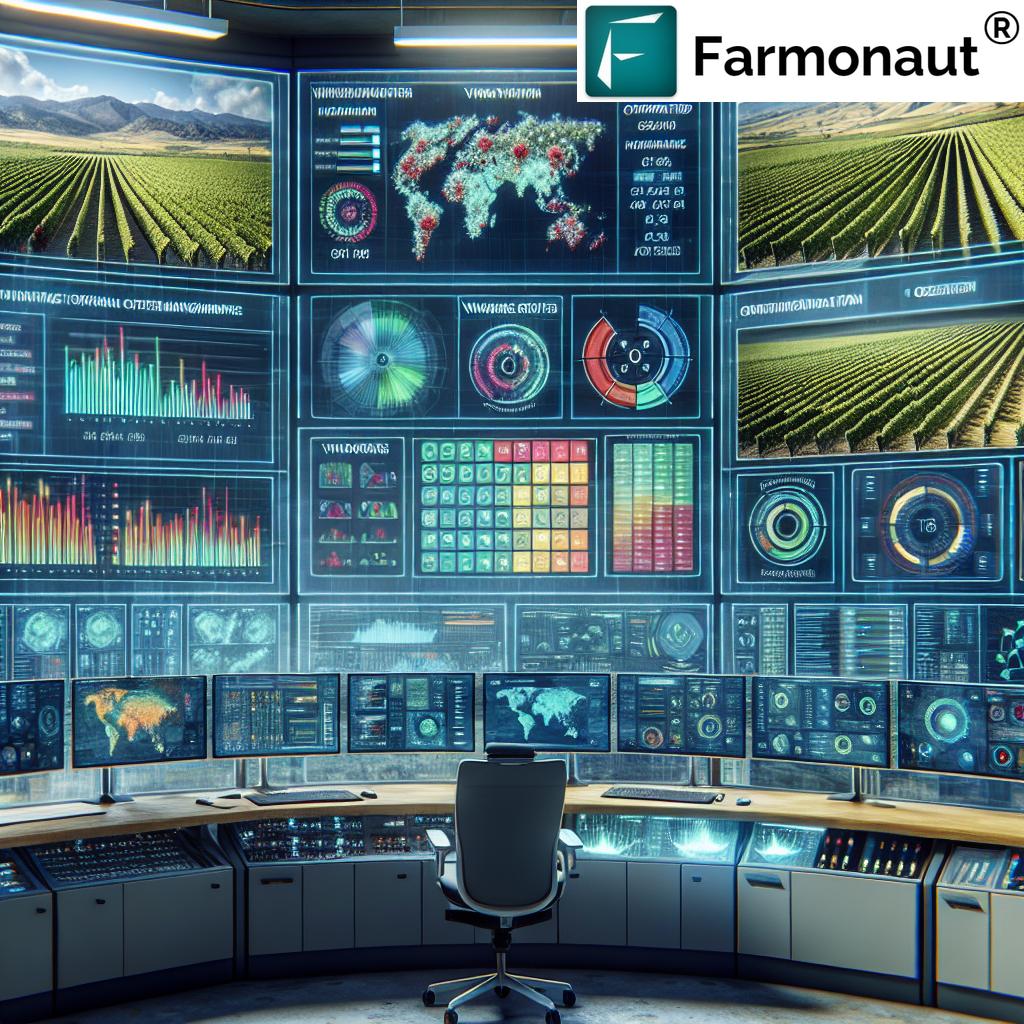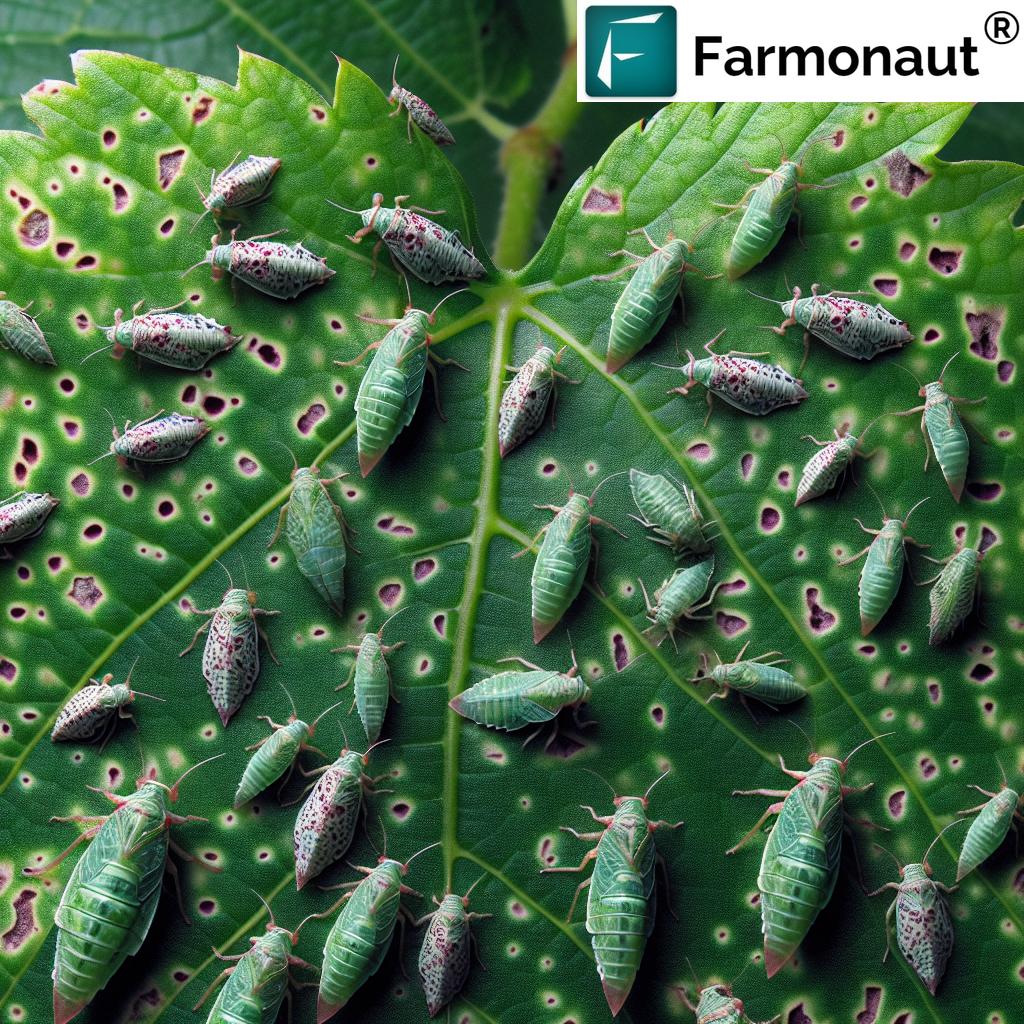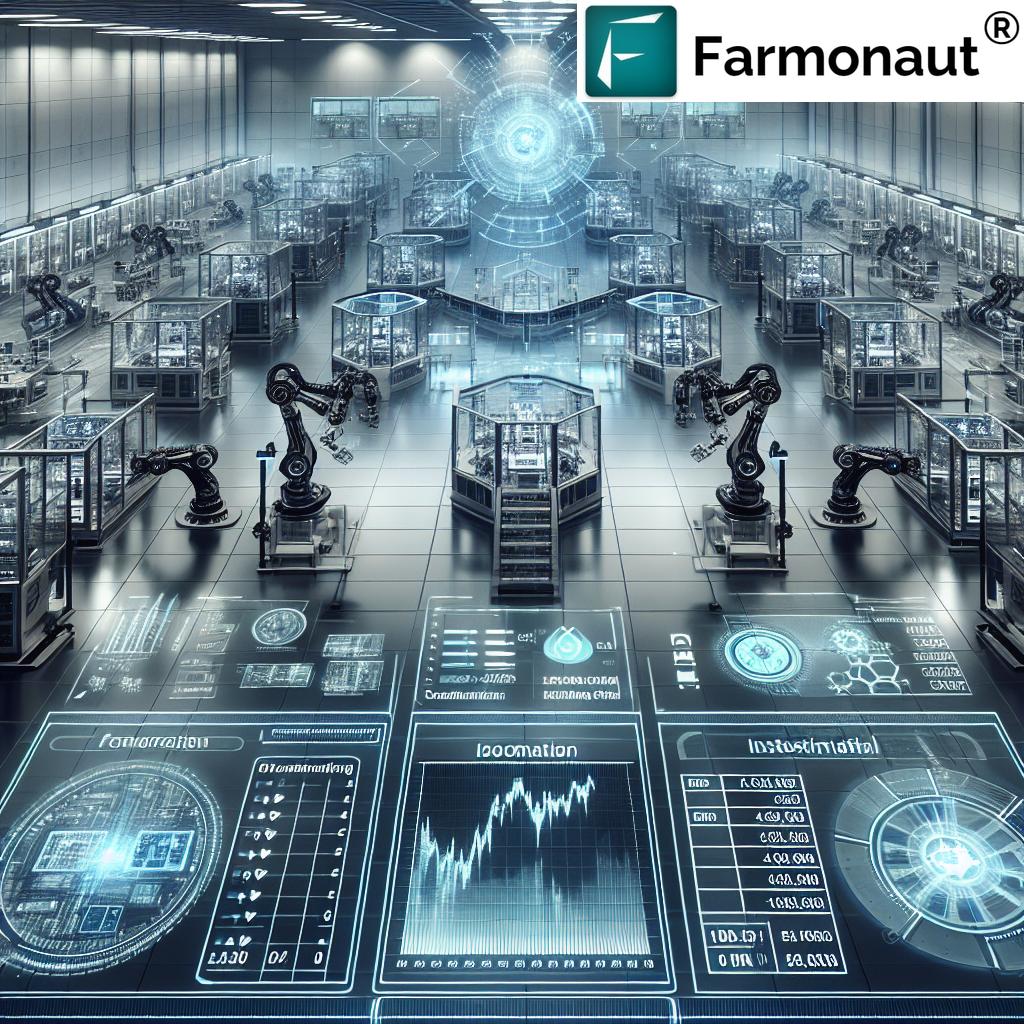Agriculture Data Analytics: 7 Powerful Ways to Boost Yields
Meta Description: Agriculture data analytics empowers farmers with actionable insights for higher yields, improved efficiency, and sustainable farming practices through precision farming technology, crop yield prediction, and real-time decision-making.
“Data-driven farms can increase crop yields by up to 25% using advanced analytics and precision farming technology.”
Understanding Agriculture Data Analytics
In today’s rapidly evolving agricultural landscape, agriculture data analytics is emerging as a transformative force. As farmers, foresters, and agribusinesses, we increasingly rely on advanced analytics, sensors, and satellite imagery to unlock new efficiencies and drive productivity. But what exactly is agriculture data analytics, and how does it help us reimagine farm management solutions?
Agriculture data analytics involves the systematic collection, processing, and analysis of diverse data sources. These include field-based sensors, weather forecasts, soil moisture readings, satellite imagery, and even market trends. By analyzing this wealth of information, we extract actionable insights—empowering us to make smarter decisions regarding crop selection, resource allocation, disease prevention, and sustainable practices. The net effect? Higher yields, greater profitability, and a future-focused approach to agriculture, forestry, and allied sectors.
- Drive Efficiency: Use real-time data to optimize irrigation, pesticide application, and fertilizer utilization.
- Enable Informed Decisions: Plan planting and harvesting around weather insights and yield prediction models.
- Promote Sustainability: Adopt sustainable farming practices through precise input management and carbon footprint monitoring.
Key Applications of Agriculture Data Analytics in Modern Farming
By harnessing vast data streams, we revolutionize how we analyze our fields, manage resources, and maximize yields. Let’s dive into some of the primary applications reshaping the future of agricultural, forestry, and food production sectors.
1. Precision Farming Technology
Precision farming technology combines satellite imagery for farming, sensors, and data analysis to provide targeted recommendations. It allows us to optimize every aspect of crop production—water application, fertilizer dosing, and timely pest control—based on granular insights into soil conditions, crop growth stages, and environmental impact.
- Benefits: Reduces input costs, improves resource allocation, and supports sustainable practices by minimizing wastage of water and pesticides.
- Technology Highlight: Farmonaut’s Large Scale Farm Management provides powerful precision technologies for monitoring vast agricultural operations using satellite-based analytics via mobile and web apps.
2. Crop Yield Prediction & Forecasting
We leverage analytics and machine learning models to accurately predict and forecast crop yields. By analyzing historic yield records, current weather predictions, soil health information, and other key factors, we can project our harvest outcomes, fine-tune our plans, and navigate market trends with confidence.
- Advantages: Guides crop selection, risk management, and financial planning, ensuring profitable and sustainable harvests.
3. Pest and Disease Detection in Crops
Timely detection of pests and diseases is critical to safeguarding our fields. Analytics powered by IoT sensors, drones, and satellite imagery monitor plant health in real-time, identifying patterns or early signs of infestations. This proactive approach enables us to take swift action—protecting crops, reducing losses, and cutting down unnecessary pesticide use.
- Enhanced Monitoring: Receive instant alerts for disease hotspots or pest outbreaks, even at early stages, with AI-driven solutions like Farmonaut’s Crop, Plantation & Forest Advisory.
4. Soil Health Monitoring & Nutrient Management
Healthy, fertile soil lies at the core of every productive farm. With soil health monitoring, we collect rich data on moisture, pH, and nutrient content—enabling the precision application of fertilizers and soil amendments. Modern farm management solutions help us avoid over-application, fostering stronger crop growth and mitigating environmental risks.
- Results: Better soil fertility, balanced nutrient cycles, and sustainable returns season after season.
5. Weather Forecasting in Agriculture
Weather remains the most unpredictable factor in farming. Modern analytics platforms transform how we interpret local and global weather data. With accurate weather forecasting in agriculture, we can choose the optimal times for planting, irrigation, and harvesting operations—reducing risks and ensuring maximum yields.
- Application: Combine real-time satellite and weather station feeds for location-specific alerts (e.g., through Farmonaut Satellite & Weather Data API integration).
6. Supply Chain Optimization
With robust analytics, we streamline our entire supply chain—from production and processing to transport and delivery. By analyzing data on market demand, crop readiness, and logistics, we optimize routes, minimize waste, and ensure fresh products reach consumers efficiently.
- Powerful Tools: Farmonaut Fleet Management uses geospatial analytics to track and optimize farm machinery and delivery vehicles, reducing operating costs and improving supply chain transparency.
7. Blockchain-Based Traceability and Food Security
Food safety and consumer trust demand uncompromising transparency. Blockchain technology creates immutable records of every stage in an agricultural supply chain. This helps us guarantee food safety, combat fraud, and promote responsible sourcing. Blockchain is increasingly central to traceability solutions in agricultural data analytics.
- Industry Example: Farmonaut Product Traceability supports seamless, blockchain-backed tracking of products from farm to table for sectors like food processing and textiles.
“Over 80% of top-performing farms use predictive analytics for efficient resource allocation and sustainable agriculture.”
The 7 Powerful Ways Data Analytics Boost Yields
- Precision Farming: Fine-tune input application through field-level segmentation.
- Crop Yield Prediction: Leverage AI-driven forecasting and scenario analysis.
- Pest and Disease Detection: Combine real-time field data from sensors and drones for early alerting.
- Soil Health & Nutrient Management: Balance nutrient applications using continuous data streams.
- Weather & Climate Forecasting: Use predictive modeling to schedule all farm tasks efficiently.
- Supply Chain & Resource Optimization: Analyze logistics to minimize delays, reduce losses, and optimize storage.
- Blockchain Traceability: Ensure product authenticity, enhance safety, and build consumer trust.
Comparison Table: Agriculture Data Analytics Methods
| Analytics Method/Technology | Estimated Yield Improvement (%) | Primary Application | Required Data Inputs | Sustainability Impact (Score 1-5) |
|---|---|---|---|---|
| Precision Farming Technology | 15-25% | Input optimization, zone-based management | Soil sensors, satellite imagery, weather data | 5 |
| Crop Yield Prediction | 12-18% | Forecasting, planning, risk assessment | Historical yields, weather, soil, crop data | 4 |
| Pest & Disease Detection | 6-15% | Early warning, targeted mitigation | Drones, IoT sensors, satellite data | 5 |
| Soil Health Monitoring | 10-17% | Nutrient & moisture management | Soil, weather, imagery, sensor data | 5 |
| Weather Forecasting in Agriculture | 8-14% | Operation scheduling, risk mitigation | Historical weather, satellite feeds | 4 |
| Supply Chain Optimization | 5-12% | Logistics, storage, market integration | Production data, market trends, logistics | 4 |
| Blockchain Traceability | 3-7% | Food safety, product authentication | Supply chain, harvest, processing data | 5 |
Emerging Technologies Shaping Agriculture Data Analytics
The future of precision agriculture is inseparable from emerging technologies that amplify our ability to gather, integrate, and act upon data. These breakthroughs empower us to implement truly sustainable farming practices, improve crop yield prediction, and enhance farm management solutions.
Artificial Intelligence (AI) & Machine Learning
- AI processes massive datasets, identifying subtle patterns in crop growth, disease outbreaks, and weather trends.
- Machine learning models predict yields, recommend input schedules, and automate anomaly detection—maximizing both efficiency and profitability.
- With Farmonaut’s Jeevn AI Advisory System, farmers receive real-time, expert-backed advice based on current satellite and sensor data, optimizing decisions in irrigation, fertilization, and disease management.
Internet of Things (IoT)
- Connected sensors continuously monitor field conditions—soil moisture, temperature, pH, and more.
- IoT-powered devices send real-time data to analytics platforms, providing immediate feedback and precision recommendations.
Satellite Imagery for Farming and Drones & Remote Sensing
- High-resolution satellite imagery and drones enable us to visualize and assess crop health, growth variability, drought stress, or pest hotspots across large tracts of land.
- Farmonaut harnesses multispectral satellite technology to deliver detailed NDVI (Normalized Difference Vegetation Index) mapping for precision crop management.
Blockchain Technology in Agriculture Supply Chains
- Blockchain creates tamper-proof records for every step in the agricultural supply chain.
- It enhances transparency for producers and consumers, supporting food safety, ethical sourcing, and sustainability goals.
- Explore Farmonaut’s Blockchain Traceability Solutions for food, textile, and broader agricultural industries.
Developer Integration: APIs for Satellite & Weather Data
- Integrate live field and weather data directly into custom dashboards or apps using Farmonaut’s Satellite & Weather API. Access developer documentation here.
- Make data-driven farm management scalable and efficient, no matter the size or complexity of your operations.
Farmonaut: Empowering Precision Farming Globally
Farmonaut is leading the way in democratizing agriculture data analytics and making advanced precision farming technology accessible, affordable, and impactful worldwide. Our mission is simple: Transform traditional practices with innovative, user-friendly digital tools that maximize yields, minimize resource wastage, and promote long-term sustainability for farmers, agribusinesses, and foresters.
- Satellite-Based Crop Health Monitoring: Farmonaut’s platform leverages satellite imagery to provide detailed crop health mapping, soil moisture analytics, and recommendations for optimized irrigation and fertilizer use—driving yield improvement and resource efficiency.
- Jeevn AI-Based Farm Advisory: Farmers receive personalized, data-driven advice on crop management, weather risks, resource allocation, and pest control—supported by live analytics and machine learning models.
- Blockchain-Based Traceability: Built-in blockchain solutions elevate supply chain transparency, product authentication, and consumer trust for food, textiles, and more.
- Fleet & Resource Management: Powerful modules help track agricultural machinery, schedule maintenance, and optimize logistics—all from a mobile-friendly interface (Fleet Management Solution).
- Carbon Footprinting: Monitor your carbon emissions with Farmonaut’s Carbon Footprinting toolkit, meeting regulatory needs and supporting climate-friendly, sustainable farming practices.
- Accessibility: Multi-platform support (Android, iOS, Web, and APIs) ensures users can manage farms, forests, and supply chains from anywhere, anytime.
- Scalable & Flexible: From smallholder plots to massive industrial operations, Farmonaut’s solutions are designed to scale with your needs.
- Secure & Compliant: State-of-the-art data security protocols protect farm and supply chain information, while blockchain integration builds trust with all stakeholders.
Use Case Highlight: Farmonaut’s Crop Loan & Insurance Services leverage satellite-based verification to enable easy, fraud-resistant access to farm financing and agricultural insurance for individual farmers and businesses.
Challenges and Considerations in Data-Driven Agriculture
The adoption of agricultural data analysis comes with both opportunities and practical challenges. Addressing these proactively is crucial for maximizing ROI and sustainability:
-
Data Privacy & Security:
- As we collect and share increasing amounts of agricultural, environmental, and market data, it is essential to protect sensitive farm and supply chain information.
- Farmonaut’s blockchain and security features are engineered to safeguard stakeholders’ data and reinforce trust in digital farming practices.
-
High Initial Investment:
- The cost of advanced sensors, analytics platforms, and training can be a hurdle—especially for small and medium farms.
- Affordable, scalable solutions like Farmonaut’s subscription model help lower this barrier, offering tiered pricing based on hectare coverage and data update frequency.
-
Data Integration:
- Combining disparate data—from satellite, sensors, field records, and market trends—can be complex.
- Robust platforms with standardized protocols simplify integration and support comprehensive analysis.
-
Skill Gap:
- Advanced data interpretation requires training and upskilling for both farmers and agri-sector professionals.
- Digital advisory tools and ongoing educational initiatives are key to closing this gap.
Future Outlook: The Road Ahead for Agriculture Data Analytics
The momentum behind agriculture data analytics is only accelerating. The next decade will see a dramatic rise in real-time data collection, analysis, and field-based automation. Here’s how the landscape is likely to evolve:
- AI and Automation: Autonomous tractors, drones, and smart irrigation systems will increasingly rely on integrated data analytics for full field optimization.
- Democratization of Technology: Subscription-based platforms and mobile apps will keep high-value solutions within reach of smallholders, not just large agribusinesses.
- Sustainability at the Forefront: Climate-smart agriculture and precise carbon tracking will become standard, driven by regulatory needs and consumer demand.
- Integration Across Sectors: Government agencies, NGOs, and corporate agribusiness will all benefit from unified analytics—driving sector-wide improvements in food security and environmental stewardship.
As stakeholders in the global food system, we must continue to invest in training, collaboration, and the responsible, transparent use of data. The future is data-driven, sustainable, and brighter than ever for agriculture, forestry, and allied industries!
Farmonaut Subscription Options & App Access
Ready to unlock the power of precision agriculture, live satellite analytics, and cutting-edge farm management solutions? Farmonaut offers simple, scalable subscriptions tailored to farmers, cooperatives, agribusinesses, and governments worldwide.
- Access Farmonaut anywhere:
Frequently Asked Questions (FAQs) on Agriculture Data Analytics
What is agriculture data analytics and why is it important?
Agriculture data analytics is the process of collecting, analyzing, and interpreting data from farms, sensors, satellites, and markets. It is essential because it enables farmers and stakeholders to make informed decisions, optimize resource usage, increase yields, and promote sustainable farming practices.
How does precision farming technology work in practice?
Precision farming technology uses detailed data—such as soil maps, crop health insights from satellite imagery, and real-time weather stats—to deliver precise recommendations for seeding, fertilizing, irrigation, and crop protection. This targeted approach enhances productivity and reduces environmental impact.
Can smallholder farmers benefit from advanced data analytics?
Yes! Platforms like Farmonaut are designed to be accessible and affordable, ensuring smallholders can use the same powerful analytics tools as larger farms, ultimately improving their yields, resource efficiency, and market access.
Is my farm data secure with Farmonaut?
Absolutely. Farmonaut employs advanced security measures— including blockchain integration— to safeguard sensitive farm and supply chain information. Data privacy is a top priority.
What kind of insights can I expect from satellite imagery for farming?
Satellite imagery provides detailed information on crop health, soil moisture, growth variability, potential pest outbreaks, and the impact of weather or irrigation events—delivered directly to your app or API dashboard.
Can data analytics help me access crop loans or insurance?
Yes, with Farmonaut’s crop loan and insurance, satellite-based verification makes crop loan approvals and insurance claim processing faster and more secure, reducing the risk of fraud.
How can I get started with Farmonaut’s APIs?
Developers and businesses can integrate satellite and weather data into their own platforms using Farmonaut’s API. Check out detailed documentation here.
Conclusion: Data Analytics and the Future of Sustainable Agriculture
As we’ve explored, agriculture data analytics isn’t just a trend—it’s the backbone of modern, responsible, and highly-productive farming. Harnessing real-time data from diverse sources, leveraging precision farming technology, and embracing innovations like AI, machine learning, IOT, and blockchain allow us to:
- Maximize crop yields and profitability, while reducing input waste
- Enhance farm management solutions—no matter the size or complexity
- Proactively manage disease and pest risks through early detection
- Maintain robust food safety and transparency across the supply chain
- Meet sustainability, regulatory, and climate goals with advanced tracking
With visionary platforms like Farmonaut, farmers, agribusinesses, and foresters gain affordable, actionable access to these innovations—ensuring that the future of agriculture is not just fruitful, but also sustainable and resilient.
Embrace the power of agriculture data analytics today and become a leader in tomorrow’s data-driven, sustainable food system.


